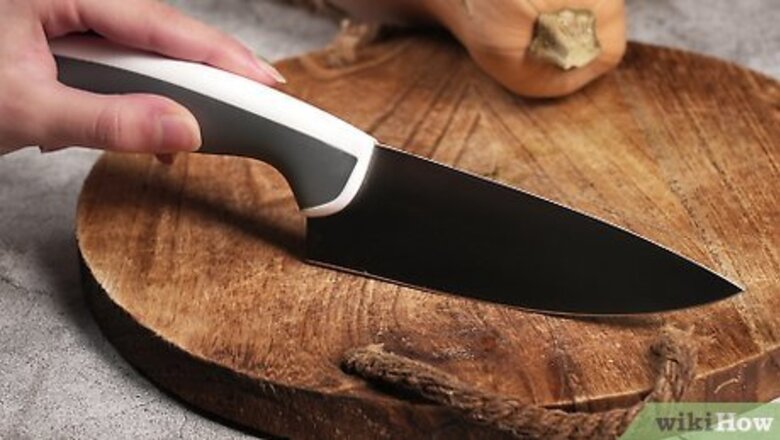
views
Basic Cutting Technique
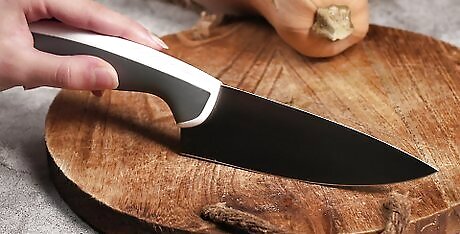
Sharpen your knife, if necessary. It's important to work with a very sharp knife, since butternut squash is firm and smooth. A blunt knife could slip and cut you if you aren't careful. Use a thick, heavy knife to do the job.
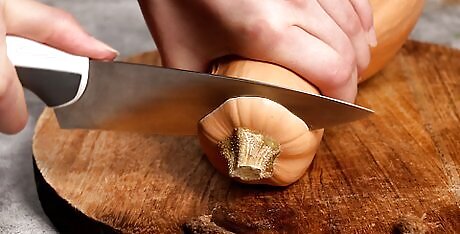
Cut off the top. Place the squash on a large cutting board. Hold the thicker end of the squash with one hand, and use the other to cut approximately 1/2 inch (1.2 cm) off the narrow end, just below the stem. The slice should be clean and even.

Cut off the bottom. Hold the narrow end of the squash and use your other hand to cut approximately 1/2 inch (about 1.2 cm) off the wider end.

Peel the squash. Now that you have a flat base to work with, it's time to peel off the rind. Use a vegetable peeler, or if you don't have one that's sturdy enough, a very sharp knife. Stand the squash upright on its wider end. Hold it from the top with one hand and use the other to run the vegetable peeler in vertical strokes down the side of the squash. Alternatively, you could hold the squash in one hand and use the vegetable peeler to remove the rind in horizontal strokes.
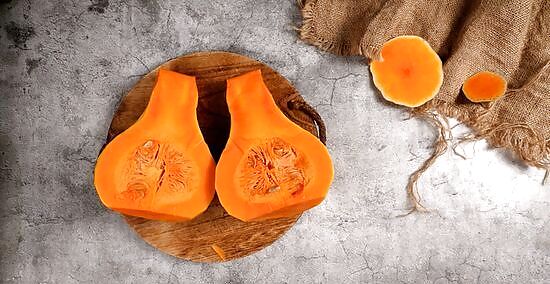
Slice the squash down the middle. Stand the squash upright on its wider end. Place the knife in the middle of the top of the squash and slice downward. Make one clean cut to slice the squash in two. Cutting butternut squash can sometimes be difficult because the squash is dense and hard. If this is the case, gently tap the knife end with a rubber mallet to help it cut through the flesh of the squash. If the mallet method doesn't work, you can switch to a serrated knife and use a sawing motion to cut the squash in half.
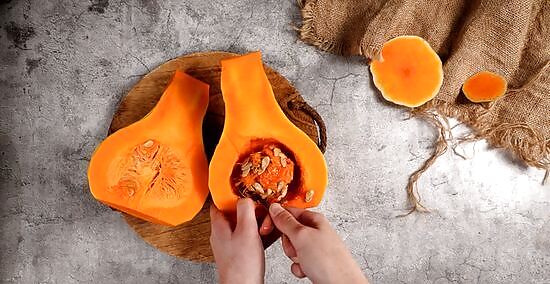
Scoop out the seeds and pulp. Use a metal spoon to scoop the seeds and stringy pulp from the both halves of the squash. The seeds can be roasted like pumpkin seeds, so save them if you'd like.

Cut the halves in half. Lay both halves of the squash cut side down on the cutting board. Make a horizontal cut in each half, separating the bulbous end from the thin end. You should now have four parts of the butternut squash to work with.

Cut the sections the squash into lengthwise strips. The thickness of your strips will vary depending on the specific recipe. Generally, the strips will range from 1/2 inch to 1 inch (about 1.2 cm to 2.5 cm). For recipes like butternut squash chips, could run the peeled butternut squash over a mandolin to create super thin, even slices instead of slicing the squash using a knife.
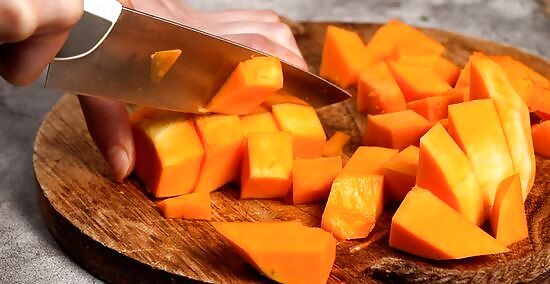
Cut the lengthwise strips crosswise. You could leave them as strips if you'd like, or cut them crosswise to create uniform butternut squash cubes. If you want to save some time with the cubing process, stack several lengthwise strips on top of each other and cut them at the same time. If you utilize this technique, don't let the strips slip while cutting. This will create uneven cubes. Keep in mind that the smaller you slice the squash, the more quickly the cubes will cook. Determine how small the pieces should be for the recipe you are using.
Ways to Eat Butternut Squash
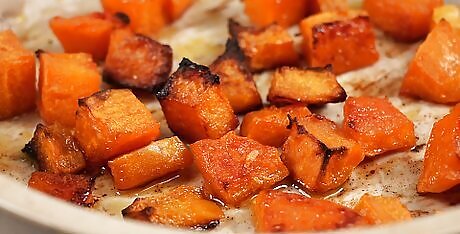
Make roasted butternut squash cubes. To roast butternut squash, season the cubes with a drizzle of olive oil and a sprinkle of salt and pepper. Roast the squash cubes in an oven heated to 350 °F (177 °C). Remove the squash from the oven when the cubes are soft on the inside and brown and crunchy on the outside. Add savory spices, like cumin, chili powder or cayenne pepper, to make a spicy side dish. Add sweet elements, like brown sugar, maple syrup or agave nectar, to make a delectable treat.
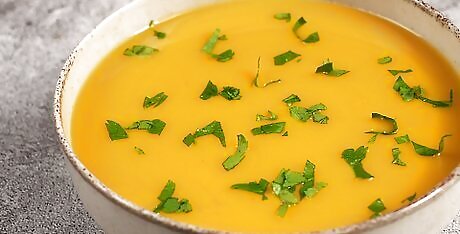
Make butternut squash soup. Butternut squash soup has a silky, creamy texture, perfect for warming up on a winter night. To make it, follow these steps: Roast butternut squash cubes in the oven until they are soft. In the meantime, sauté a diced onion and a few cloves of minced garlic in some olive oil in a large soup pot on over medium heat on the stove. Add the butternut squash and a quart of chicken or vegetable stock. Bring the mixture to a boil, reduce it to a simmer, and cook for 20 minutes. Season with salt and pepper to taste, then blend it in batches in the blender. Serve with a drizzle of cream and some black pepper.
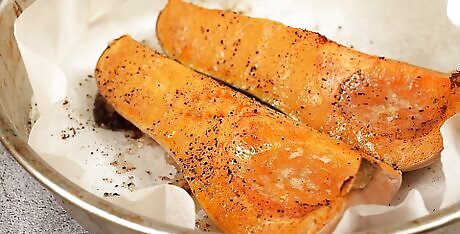
Cook it whole. If you want to skip the peeling process, you can bake a squash whole and cut it when it's soft. Poke a squash all over with a fork and place it on a baking sheet in an oven heated to 350 °F (177 °C). Bake the squash for about an hour, until it's tender when you poke it with a fork. Remove it from the oven, let it cool for a few minutes, and cut it into slices.

















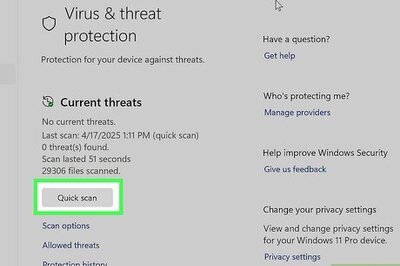


Comments
0 comment